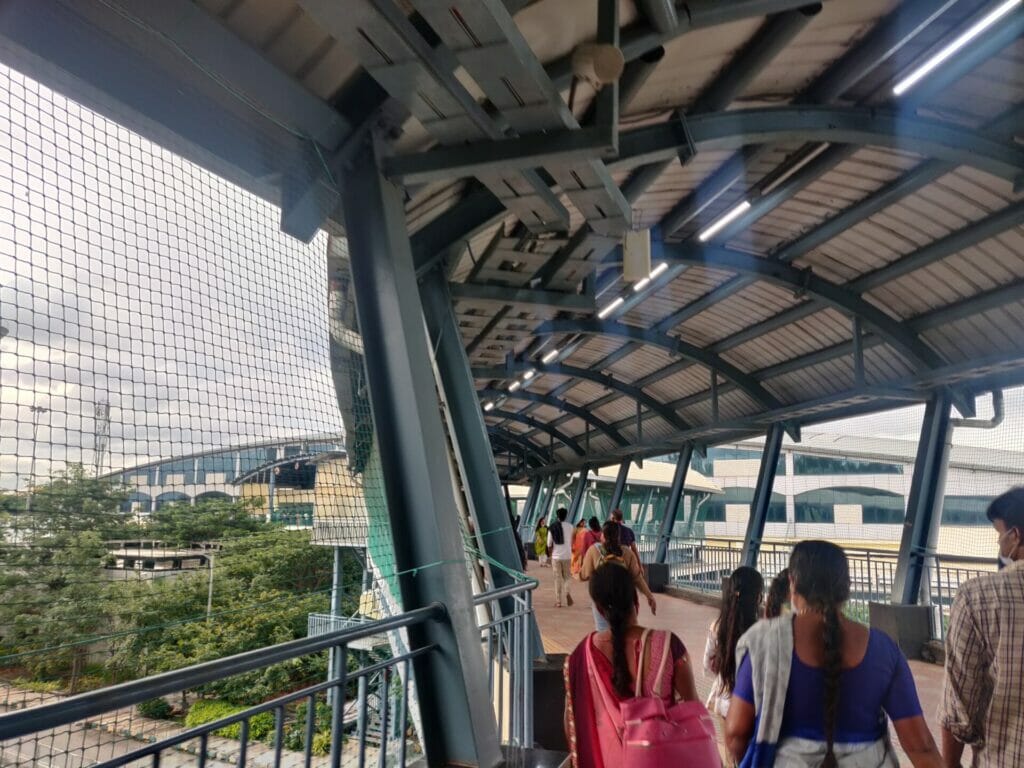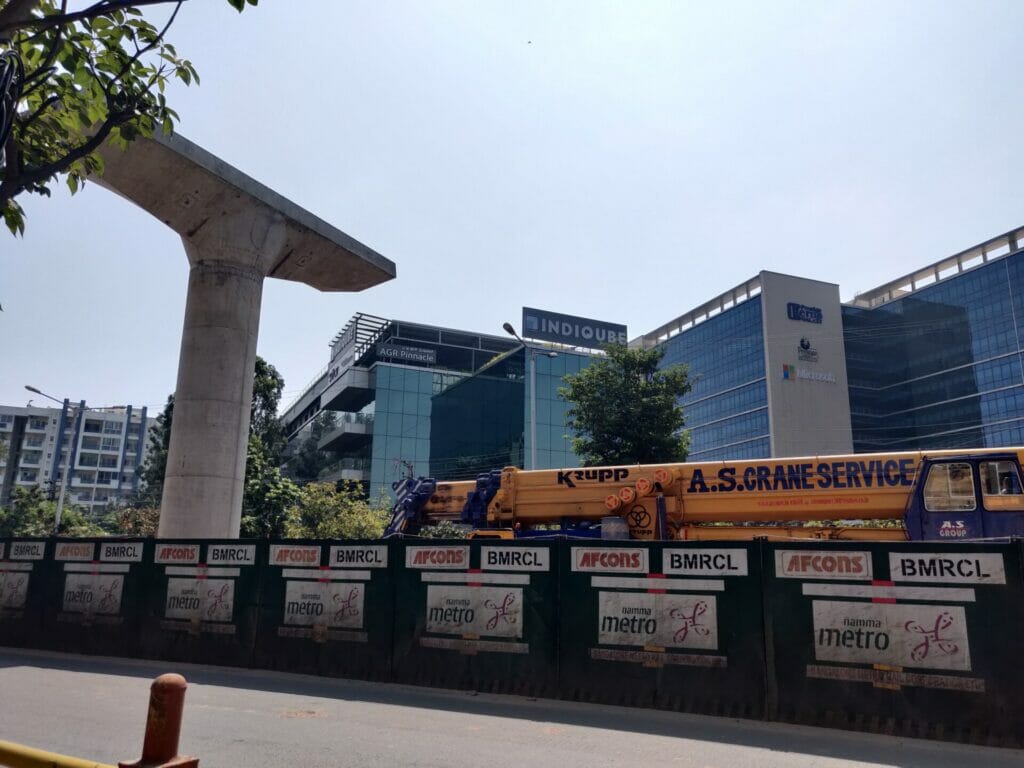This year started off with the Bengaluru Metro rail Corporation Ltd. (BMRCL) being in the news for its promise to make nearly 40 kilometres of metro lines operational in 2023. This included the extension of the purple line from Byappanahlli to Whitefield and reopening the Yellow line from R.V Road station to Bommasandra.
However, in early January this year, there were tragic reports about an under-construction metro pillar in HBR Layout, along the KP Puram- Airport stretch, collapsing on a mother-son duo, who succumbed to their injuries. An inspection report, submitted by Professor J M Chandra Kishen of the civil engineering department at the Indian Institute of Science (IISc), deemed the inadequate support structure for the tall reinforcement cage as the reason behind the collapse.

On January 23rd, another instance involving a metro barricade falling on a moving car near Doddanekundi junction made the headlines, no injuries were reported. Taking stock of these accidents, on January 24th, Citizen Matters held a webinar, titled Living with metro construction: Addressing safety concerns.
The panellists for the webinar were Meghna Verma, Associate professor, Ramaiah Institute of Management, Dayanand SIngh, chief safety expert, Bhopal Metro project, Prasad. B. Babu, a chief structures expert, and Anjali Saini, a member of Whitefield Rising.
Safety and design standards
“The metro system being implemented in major Indian cities is powered by a third-rail, which is perceived to be extremely safe. Safety starts from design,” says Prasad Babu.
“The majority of the standards that are applicable to the Indian metros are those issued by the Ministry of Railways. Organisations like Research Design and Standards Organisation, Bureau of Indian Standards and Indian Road Congress are also consulted, ” he states. Occasionally, they also utilise international codes (Euro codes).
Safety management is held in the highest regard while contracts are drafted and assigned to the contractors, Prasad Babu says. “The contracts have to be in compliance with the occupational health and safety standards. From the design perspective, the responsibility of health and safety lies with the contractor,” he says, adding that the latter is bound by the legislation and codes of practice. They are also responsible for the safety of their workers and personnel on the site.
Dayanand says job hazard assessments, which anticipate or analyse risks, are undertaken to see what hazards are likely to cause danger to the public. Further, proactive safety inspections at the project site have to be categorically carried out for the tools and machinery to address deficiencies. “In addition to this, internal and external audits are carried out to examine if the on-going work is foolpoof and risk-free,” says Dayanand, while elaborating the myriad safety checks that occur at metro construction sites. He stresses that accidents or dangers need to be immediately reported but often workers feel afraid to do so as they feel they will be scolded by their superiors.
Read more: Namma Metro has only worsened Bengaluru’s traffic congestion and air quality
Going beyond physical safety
Anjali Saini is of the opinion that there are several facets to citizens’ safety that have to be accounted for during metro construction. “Steel rods and construction debris are left round the construction sites, one has to navigate the large construction vehicles to get through them, ” she says. Often, during metro construction, a lot of dust pollution is left unchecked. Anjali says that the Air Quality Index rose to almost 800 in the Mahadevapura zone.

Anjali agrees with Dayanand, and says accidents have to be reported and in a timely manner. She adds that several of the tasks or work is further sub-contracted, and it doesn’t directly come under the purview of BMRCL’s management. “If these sub-contractors are in-charge of doing the clean-up, you can see that the quality of work done by them is very sub-standard, ” she says.
On the topic of pedestrian safety, Anjali says several footpaths across various points of the city, are encroached upon due to metro construction. This further endangers the pedestrians as they have to work on a busy street instead of a designated pathway, she points out.
Concerns of communication, convenience
“If the start and end date of the construction process is communicated to the residents, they are more likely to be patient. Further, following international standards, signages should be put up to signal that construction is taking place, ” Meghna says. Echoing this, Anjali states that all information, such as about roads being blocked, alternate commute routes or diversions being devised, was received through the media and not directly from BMRCL.
We need a robust and reliant information system to apprise us of the metro timings, routes, accessibility channels, etc, says Meghna. Accessing the metro itself for people with disabilities, has to be integrated in the planning process. “Additionally, we don’t need just connectivity, but we need seamless connectivity, ” she comments, adding how integration of multiple modes of commute, reliable information and metro accessibility can facilitate this.
Dayanand, who has worked closely with the Hyderabad metro, says that across the 72-kilometre stretch, there were information boards displayed where people could contact the project manager and other important officials to voice their grievances. The panellists brought the discussion to a close by flagging the newly passed Bengaluru Metropolitan Land Transport Authority (BMLTA) Bill, 2022, and voiced their hopes for better coordination among parastatals overseeing commute.
Watch the entire discussion below,
(Sherin Sunny contributed to this article)
So glad that all civil society types decided to ignore BMRCL’s 5 days of non service to commuters while they were busy “commissioning” the purple line extension. No provision made by the “government” for those who use the metro line segment that was shut down. I guess “public transport” is not to be really taken seriously.